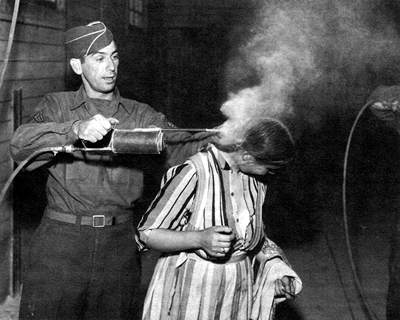Tuesday, September 24, 2024
Activity 3.1- Human Population
Tuesday, September 17, 2024
Activity 2.2.1 My Daily Water Use
Three months of water usage
June 13-July 15: 13,300 gallons
July 16-August13: 11,201 gallons
August 14-September 12: 12,700 gallons
Average number of gallons across all three bills
13,300 + 11,201 + 12,700 = 37,201/3 = 12,400 average per month
Water usage per month and per person
12,400/3 = 4,133gallons/person/month
Water usage per person and per day
4,133/30 =137.77 gallons per day
Household Water Usage Calculator
The water bills I have used to take data from are from my aunt and uncle. They are not mine. With that being said, from the data shown above, I have found that the usage of water per day is around the same, but still a little higher amount of water used daily by households in the United States of America, which is more than 300 gallons per day. Compared to a Texas household's water usage, which is 283.8 gallons per day (divided by 8,514, which is the monthly average in Texas, by 30 days, giving me 283.8) less than the daily average for my aunt's and uncle's home. In 2023, San Antonio's residential water usage was 6,275 gallons per month divided by 30 days, equaling 209.17 gallons per day. This is lower than both calculations for the amount of water usage in my aunt's and uncle's house. Considering the two different amounts of water usage in the results from different calculators, I believe it would be around 491 gallons per day; at least that's my guesstimate. Meaning that between the country's average water use and the state's average, along with the city's average, my aunt's and uncle's average daily water usage is higher.
Thursday, September 12, 2024
Activity 2.2- Cryosphere: Pedersen Glacier, Alaska
Pedersen Glacier
Grant, U.S.. 1909. Pedersen Glacier: From the Glacier Photograph Collection. Boulder, Colorado USA: National Snow and Ice Data Center. Digital media http://nsidc.org/data/glacier_photo/search/image_info/101-1-PedersenGlacier-19090722-Grant?order=true
Alaska currently accounts for 25% of all ice loss from Global Glacier.(Huronnet et al., 2021) Between the first picture and the second of the Perdersen Glacier picture, one major change I noticed was that I don't see much ablation. The ablation zone had decreased over the years and just melted away into the ocean, leaving what used to be ice sheets that have become more of a flatter surface of land than the form it used to be, more like a slope.
This is due to the snow accumulation being less than the melting of ice, making the glacier unable to keep its form. This is caused by the temperature increasing in the lower altitudes, but here is where the problem reveals itself. The cycle of ablation and accumulation of snow depends on the season, but because of the earth's climate rising, the seasonal amount of snow accumulation and melt changes. The accumulation of snow decreases due to the rising heat. Unable to keep up with the cycle of water turning into ice speeding up, snow doesn't stay on the glacier for too long. Over all, the cycle is not as prosperous as it once was when it comes to the balance of snowfall, accumulation, and ablation. Don't get me wrong, there is still a good amount of snow, but it's not the same as before. For example, Avalanches used to be more dry and snowpacked, whereas now the snow is more wet than dry. Again, this is due to the earth's climate change. The structure of the water molecules changes due to the melting of snow. The molecules get closer together due to water in its liquid form being denser than when water is ice, which only happens due to heat. The glacier has lost its old form due to the climate and is slowly becoming a different landscape. Losing its ways of supporting the life of bleak weather-accustomed wildlife.
Quillbot, 2024. Grammar checker.
Thursday, September 5, 2024
Module 1.1- A Turning Point Event for Environmental Science, Silent Spring

Activity 2.3.1- Ranchers, Anglers, Beavers
1. Exploratory Probe basic facts and knowledge found in the video and article. The Bureau of Land Management, otherwise known as BLM, u...
-
Less developed World Birth rate: 18 per 1,000 Death rate: 8 per 1,000 Population growth rate: 1.1 Life expectancy for males: 69...
-
Pedersen Glacier Grant, U.S.. 1909. Pedersen Glacier: From the Glacier Photograph Collection. Boulder, Colorado USA: National Snow and Ice...
-
Three months of water usage June 13-July 15: 13,300 gallons July 16-August13: 11,201 gallons August 14-September 12: 12,700 gallons Average...
